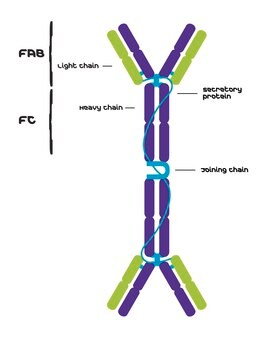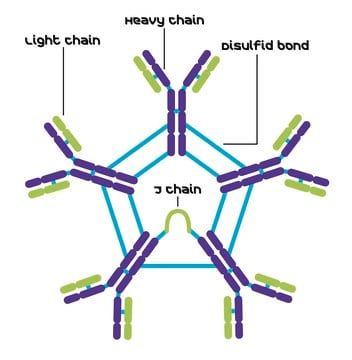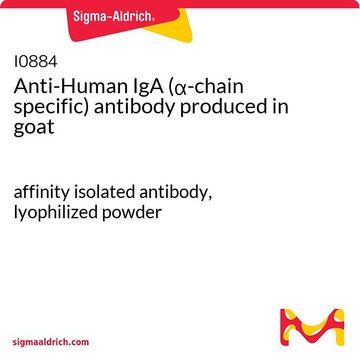M1421
IgA, Kappa from murine myeloma
clone TEPC 15, purified immunoglobulin, buffered aqueous solution
Synonym(s):
Mouse IgA-κ
About This Item
Recommended Products
biological source
mouse
conjugate
unconjugated
antibody form
purified immunoglobulin
clone
TEPC 15, monoclonal
assay
≥90% (non-reduced, SDS-PAGE)
form
buffered aqueous solution
shipped in
dry ice
storage temp.
−20°C
target post-translational modification
unmodified
Looking for similar products? Visit Product Comparison Guide
General description
IgA, κ from murine myeloma is produced by TEPC 15 tumor line that is pristane-induced plasmacytoma originated and carried intraperitoneally in BALB/c mice. The antibody is specific for κ chain of mouse IgA. The purified immunoglobulin preparation is non-reactive with anti-mouse IgM, IgG1, IgG2a, IgG2b, and IgG3.
Specificity
Application
- immunofluorescence assay
- enzyme-linked immunosorbent assay (ELISA)
- invasion assays
- western blotting
Biochem/physiol Actions
Physical form
Disclaimer
Storage Class
10 - Combustible liquids
wgk_germany
WGK 3
flash_point_f
Not applicable
flash_point_c
Not applicable
ppe
Eyeshields, Gloves, multi-purpose combination respirator cartridge (US)
Certificates of Analysis (COA)
Search for Certificates of Analysis (COA) by entering the products Lot/Batch Number. Lot and Batch Numbers can be found on a product’s label following the words ‘Lot’ or ‘Batch’.
Already Own This Product?
Find documentation for the products that you have recently purchased in the Document Library.
Customers Also Viewed
Our team of scientists has experience in all areas of research including Life Science, Material Science, Chemical Synthesis, Chromatography, Analytical and many others.
Contact Technical Service








